My issue is that I have a (working) orthographic vertex and fragment shader pair that allow me to specify center X and Y of a sprite via 'translateX' and 'translateY' uniforms being passed in. I multiply by a projectionMatrix that is hardcoded and works great. Everything works as far as orthographic operation. My incoming geometry to this shader is based around 0, 0, 0 as its center point.
I want to now figure out what that center point (0, 0, 0 in local coordinate space) becomes after the translations. I need to know this information in the fragment shader. I assumed that I can create a vector at 0, 0, 0 and then apply the same translations. However, I'm NOT getting the correct answer.
My question: what I am I doing wrong, and how can I even debug what's going on? I know that the value being computed must be wrong, but I have no insight in to what it is. (My platform is Xcode 4.2 on OS X developing for OpenGL ES 2.0 iOS)
Here's my vertex shader:
// Vertex Shader for pixel-accurate rendering
attribute vec4 a_position;
attribute vec2 a_texCoord;
varying vec2 v_texCoord;
uniform float translateX;
uniform float translateY;
// Set up orthographic projection
// this is for 640 x 960
mat4 projectionMatrix = mat4( 2.0/960.0, 0.0, 0.0, -1.0,
0.0, 2.0/640.0, 0.0, -1.0,
0.0, 0.0, -1.0, 0.0,
0.0, 0.0, 0.0, 1.0);
void main()
{
// Set position
gl_Position = a_position;
// Translate by the uniforms for offsetting
gl_Position.x += translateX;
gl_Position.y += translateY;
// Translate
gl_Position *= projectionMatrix;
// Do all the same translations to a vector with origin at 0,0,0
vec4 toPass = vec4(0, 0, 0, 1); // initialize. doesn't matter if w is 1 or 0
toPass.x += translateX;
toPass.y += translateY;
toPass *= projectionMatrix;
// this SHOULD pass the computed value to my fragment shader.
// unfortunately, whatever value is sent, isn't right.
//v_translatedOrigin = toPass;
// instead, I use this as a workaround, since I do know the correct values for my
// situation. of course this is hardcoded and is terrible.
v_translatedOrigin = vec4(500.0, 200.0, 0.0, 0.0);
}
EDIT: In response to my orthographic matrix being wrong, the following is what wikipedia has to say about ortho projections, and my -1's look right. because in my case for example the 4th element of my mat should be -((right+left)/(right-left)) which is right of 960 left of 0, so -1 * (960/960) which is -1.
EDIT: I've possibly uncovered the root issue here - what do you think?

